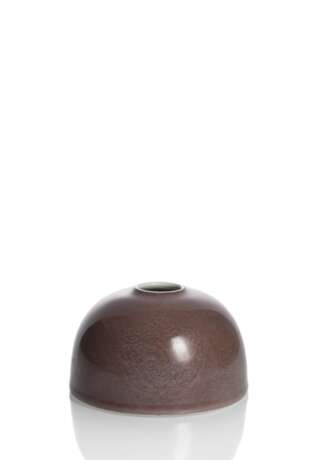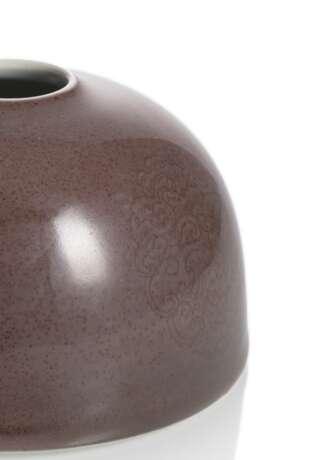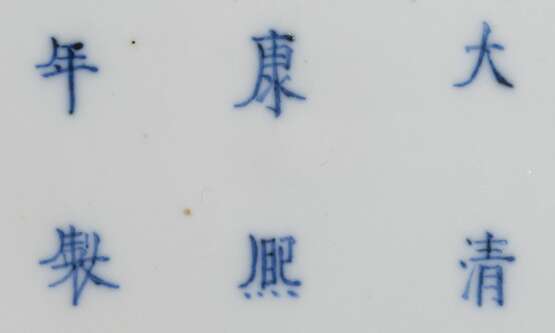ID 1215766
Lot 367 | Feiner kaiserlicher 'Peachbloom'-Tuschwasserbehälter in Form eines Hühnerkorbes
Estimate value
€ 3 000 – 5 000
D. 12,7 cm
Das elegante Tuschwassergefäß ist mit einer peachbloomfarbener Glasur überzogen, teils mit erdbeerfarbener Sprenkelung. Das Innere und der versenkte Boden sind mit einer transparenten Glasur überzogen.
Alte deutsche Privatsammlung, gekauft von Koller Zürich, 2.6.1989, Lot 232
Pinselwascher dieser Form sind als Taibai zun bekannt, nach dem Dichter der Tang-Dynastie Li Bai, der auch Li Taibai (701-762) genannt wurde. In späteren Darstellungen wird Li Bai, ein berühmter Weintrinker, oft an ein großes Weinfass dieser Form gelehnt dargestellt. Die Gefäßform ist auch als jichao zun bekannt, da sie an einen geflochtenen Hühnerstall mit einer kleinen Öffnung an der Spitze erinnert, durch die die Küken gefüttert werden. Mit Pfirsichblüten glasierte Gefäße wurden vom Kangxi-Kaiser sehr geschätzt und hauptsächlich als kleine Gelehrtenobjekte für die Tafel des Kaisers gebrannt. Die Bienenstock-Wasserkannen gehören zu einer Gruppe von pfirsichblütenglasierten Gefäßen für den Gelehrtentisch, die als Badama, "Acht große Zahlen", bekannt sind. Früher nahm man an, dass diese Gruppe aus insgesamt acht verschiedenen Formen besteht. John Ayers hat eine mögliche neunte Form des Badama identifiziert, indem er auf die Existenz von zwei leicht unterschiedlichen kugelförmigen Wassergefäßen hinwies. Die erste wird als pingguo zun, "Apfelkrug", bezeichnet, der mit einem leicht nach innen gewölbten Mundrand modelliert ist, und der andere mit einem erhöhten, niedrigen Hals (ähnlich einem Stiel), der vielleicht als Shi liu oder "Granatapfelkrug" bezeichnet wird. Siehe J. Ayers, 'The 'Peachbloom Wares of the Kangxi Period (1662-1722), Transactions of the Oriental Ceramic Society, Bd. 64, 1999-2000, S. 49 - Mündung poliert, der Standring mit wenigen sehr kleinen Bestoßungen oder Absplitterungen
| Address of auction |
Nagel Auktionen GmbH Neckarstrasse 189 - 191 70190 Stuttgart Germany | ||||||||||||||
|---|---|---|---|---|---|---|---|---|---|---|---|---|---|---|---|
| Preview | |||||||||||||||
| Phone | +49 (0)711 649 690 | ||||||||||||||
| Fax | +49 (0)711 649 69696 | ||||||||||||||
| Buyer Premium | 29,5% | ||||||||||||||
| Conditions of purchase | Conditions of purchase | ||||||||||||||
| Business hours | Business hours
|





